Six Scenarios for End of the Ukrainian Conflict
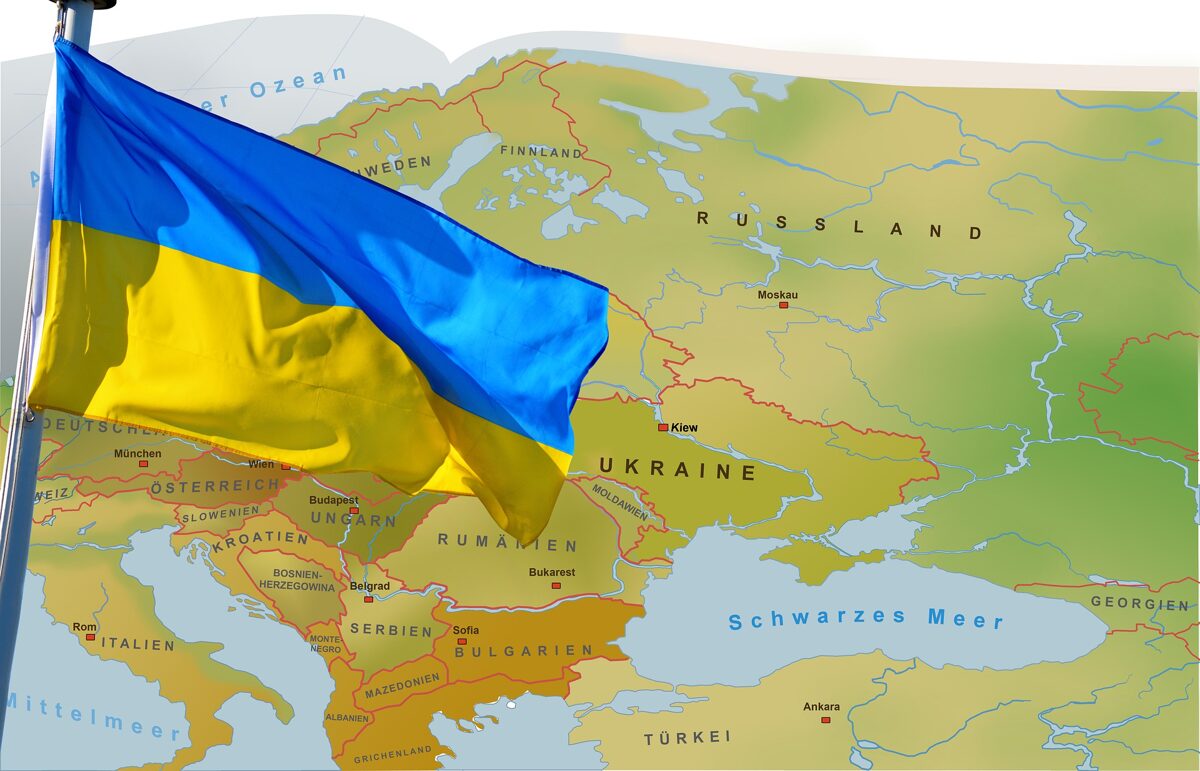
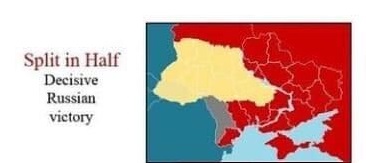
This scenario implies that Ukraine is militarily defeated, its army capitulates and it is forced in signing a very unfavourable peace treaty. In this case, the territory that once belonged to Ukraine would be split in half, with eastern territories becoming independent states or annexed by Russia. The western part would remain (formally) independent with the potential puppet government controlled by Moscow and used as a buffer zone against NATO. The territorial s plit is shown in picture 1.
2. Russian victory
In the second scenario, Russia wins without being able to completely destroy the Ukrainian army and force it to capitulate. Instead, war is over at the negotiating table with Russia taking all Black Sea regions effectively land
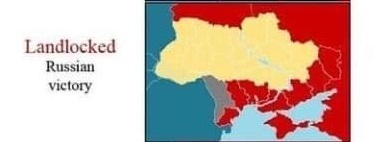 locking Ukraine. By the agreement Ukraine agrees to military neutrality with the option to join the EU, in return, it recognizes the loss of territory.
locking Ukraine. By the agreement Ukraine agrees to military neutrality with the option to join the EU, in return, it recognizes the loss of territory. 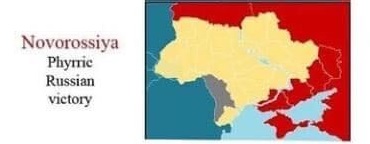
Russia wins the war, but with heavy losses without being able to effectively control the whole of eastern Ukraine and the Black Sea regions. Instead, it keeps the control of what is called Novorossiya, keeping a land connection between Crimea and the self-proclaimed Donetsk and Lugansk People's Republics. This outcome becomes increasingly realistic, having in mind that the Russian offensive has stopped and in some parts its army has retreated.
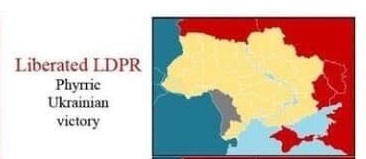
Ukrainian army succeeds in defending from the aggression and liberating some of the previously occupied Oblasts, however, at a high price. It loses a lot of civilians, soldiers, armaments, airplanes and other military equipment. Crimea and LPR and DNR are annexed by Russia and Ukraine is forced to recognize the loss by signing a peace agreement. This outcome is as well highly possible.
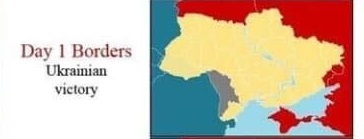
Ukraine manages with the support of Western allies (support in sending military aid, not direct involvement in the conflict), to liberate all territories that it controlled before the start of the aggression. Donetsk and Lugansk remain under the control of rebels but are not internationally recognizes nor does Russia tried to annex them. Russia admits the defeat and preserves control over Crimea only.
Ukraine is coming out of the war victorious while Russia experiences embarrassing defeat being forced to leave Crimea as well. Ukraine then joins NATO and the EU, while Russia is not considered as a world superpower anymore.
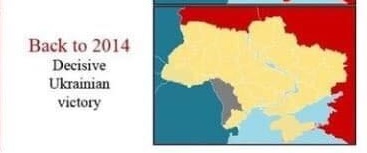
Double Effect Doctrine in the Case of NATO Aggression on FR Yugoslavia in 1999
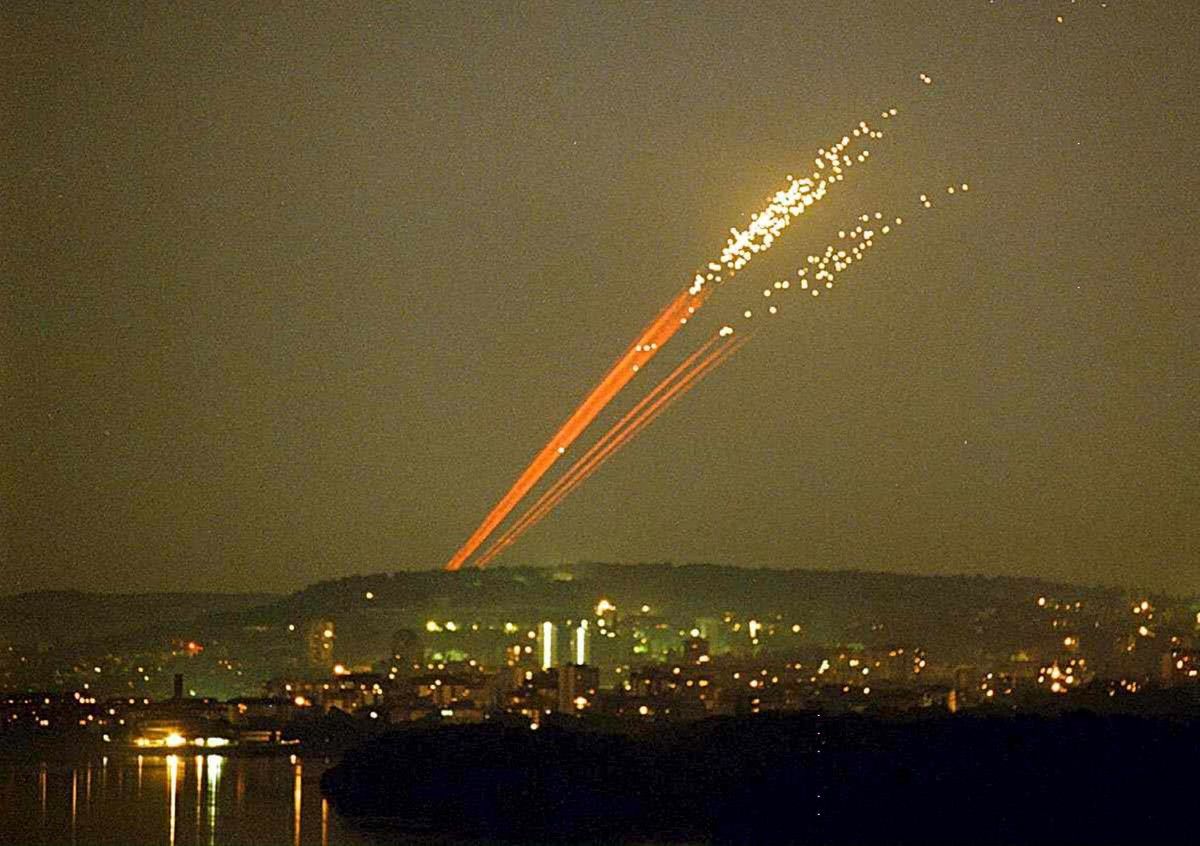
Photo: Anti-Aircraft Missiles Over Belgrade
War and all other armed conflicts in most cases inevitably
mean civilian casualties. Although killing civilians in war is prohibited by
the rules of war, including international humanitarian law, Geneva Convention
and other international treaties. However, civil casualties are almost always
present. Notwithstanding, in some cases killing of civilians may be justified,
that’s what the Doctrine of Double Effect is about.
The principle of Double Effect is frequently referred in order to explain permissibility of serious harm or death of a human being as a side effect of fulfilling war objectives. According to the principle of double effect, sometimes it is permissible to cause a harm as a side effect (or “double effect”) of bringing about a good result even though it would not be permissible to cause such a harm as a means to bringing about the same good end.[1]
First author who introduces the principle of double
effect was Toma Aquinas in his discussion of the permissibility of self-defense.[2] Medieval catholic
political thought in The New Catholic Encyclopedia envisages four
prerequisites for the application of the principle of double effect:
- 1. The
act itself must be morally good or at least indifferent;
- 2. The
agent may not positively will the bad effect but may permit it. If he could
attain the good effect without the bad effect he should do so. The bad effect
is sometimes said to be indirectly voluntary;
- 3. The
good effect must flow from the action at least as immediately (in the order of
causality, though not necessarily in the order of time) as the bad effect. In
other words the good effect must be produced directly by the action, not by the
bad effect. Otherwise the agent would be using a bad means to a good end, which
is never allowed;
- 4. The
good effect must be sufficiently desirable to compensate for the allowing of
the bad effect.[3]
Finally, there is a fifth requirement
for the principle of double doctrine, and that is that agents strive to
minimize the foreseen harm.[4] “Michael Walzer has
convincingly argued that agents who cause harm as a foreseen side effect of
promoting a good end must be willing to accept additional risk or to forego
some benefit in order to minimize how much harm they cause.”[5]
When
it comes to the NATO bombing of Yugoslavia in 1999, it was under the pretext of
human rights violations and preventing a humanitarian catastrophe. Thirteen
NATO member states have attacked Yugoslavia in March by bombing which lasted
until June in an operation called “Allied Force”.[6] During the arial
bombardment several civilian objects were shot, including civilian maternity
hospital in Belgrade, civilian train, civilian convoy, TV station and market
place. NATO officials marked more than 500 civilian casualties as a “collateral
damage”. “Collateral damage” is the term used to mark civil casualties which
arises from the Doctrine of Double Effect.
This text will analyze three different cases of military actions in FR Yugoslavia. The
first one is the bombardment of maternity hospital in Belgrade. On 20th
May 1999. Around 5 AM, NATO aviation has bombed maternity hospital Dr. Dragiša
Mišović, killing 3 patients and 1 worker, numerous injured. “Two women in the process of giving birth and one new
born baby are reported wounded”.[7] According to the official
NATO statement, target of the bombing was not the hospital but military barracks nearby. “NATO confirmed that one of eight
laser-guided bombs intended for a military barracks in the predawn attack
overshot its target by 500 yards”.[8] There are several military
objects in Dedinje, part of Belgrade where the hospital was, including Military
Academy and several barracks. However, these objects did not have anti-aircraft
weapons nor any weapon which would endanger NATO. Therefore, if we apply the
principle of proportionality on this case, the results are as follows. Zero
killed soldiers, zero military objects destroyed, 4 civilians killed and 1
civilian object hit. Even if military barrack were hit together with hospital,
it would be questionable whether the principle of proportionality was
fulfilled. Hospital clearly was not a military target, and though NATO has not
hit any military target nor gain any military advantage by this bombing, it
cannot be justified under the Doctrine of Double Effect.
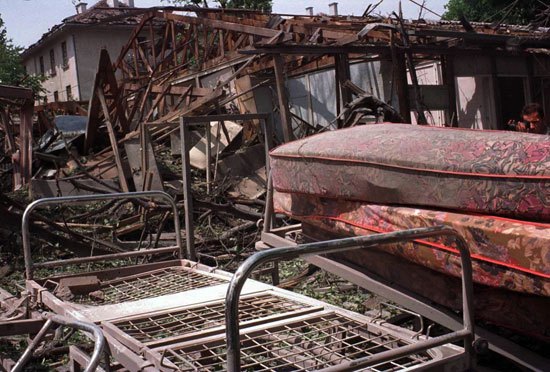
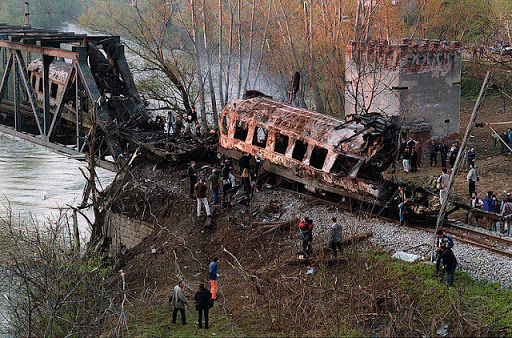 Picture: Grdelica Bridge
Picture: Grdelica Bridge
Finally,
third case that will be observed in this paper is the bombing of the national
TV station – Radio Television of Serbia (RTS) on April 23, 1999. At the moment
of attack around 150 people was in the building, 10 were killed and 18 injured
as a consequence of bombing.[12] Two main reasons were
used for bombing the TV station, first, the Radio Television of Serbia
station’s operations had a military component and the goal was to cut off the
communication. Second, it was responsible for broadcasting pro-Serb propaganda
which was guilty of prolonging the war, according to the UK’s Ministry of Defense,
Clare Short.[13]
When it comes to the first reason, cutting off the communications, because TV
towers were used by military, principle of Double Effect Doctrine might be
applicable, however, stopping propaganda is not sufficient reason to kill 10
civilians and risk killing 150. Nevertheless, if we take into account the first
reason (cutting off the communication used in military purpose) was the main
reason behind the bombing, and by this stopping the enemy in inflicting
casualties, in that case the Double Effect Doctrine may be applicable.
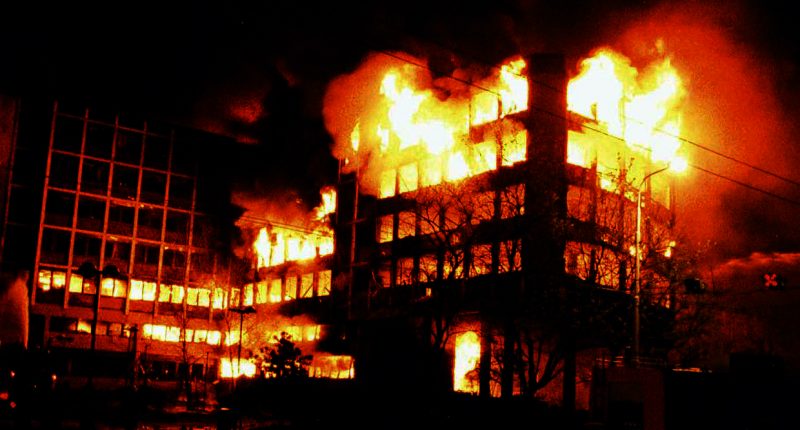
Picture: The Building of RTS in Flames
We
have seen three examples in which civil casualties occurred as a result of
military actions. Only one of them can be justified under the Doctrine of
Double Effect. However, we are witnessing a lot of “collateral casualties” in
modern warfare. Usually, very small number of them can be justified. War is per
se hideous thing, and civilians deserve a better protection. In general, humanitarian interventions are often disputed, and NATO aggression on FR Yugoslavia was a mix of reasons among which one was geopolitical goals. One should have in mind when it commes to 1999. conflict.
[1] Stanford Encyclopaedia of
Philosophy, Doctrine of Double Effect, 2004, https://plato.stanford.edu/entries/double-effect/ , retrieved: 24.10.2020.
[2] Tomas Aquinas, Summa Theologica
II-II, p. 226-227
[3] Connell,
F.J., 1967. “Double Effect, Principle of,” New Catholic Encyclopedia (Volume
4), New York: McGraw-Hill, pp. 1020–2,
[4] Stanford Encyclopaedia of
Philosophy, Doctrine of Double Effect, 2004, https://plato.stanford.edu/entries/double-effect/ , retrieved: 26.10.2020.
[5] Ibid
[6] NATO Press Conference, 25. March
1999, https://www.nato.int/kosovo/press/p990325a.htm, retrieved 26.10.2020.
[7] Human Rights Watch, Incidents
Involving Civilian Deaths in Operation Allied Force, https://www.hrw.org/reports/2000/nato/Natbm200-02.htm, retrieved: 01.11.2020.
[8] Washington
Post, NATO Bomb Said to Hit Belgrade Hospital, https://www.washingtonpost.com/wp-srv/inatl/longterm/balkans/stories/brussels052199.htm,
20.05.1999, retrieved: 01.11.2020.
[9] CNN, Yugoslav train hit during
NATO strike, 10 dead, http://edition.cnn.com/WORLD/europe/9904/12/nato.attack.07/, retrieved: 16.11.2020.
[10] YouTube, NATO Bombing on Grdelica
Bridge – first strike, https://www.youtube.com/watch?v=GIi2QDJYLwk, retrieved: 16.11.2020.
[11] CNN, Yugoslav train hit during
NATO strike, 10 dead, http://edition.cnn.com/WORLD/europe/9904/12/nato.attack.07/, retrieved: 16.11.2020.